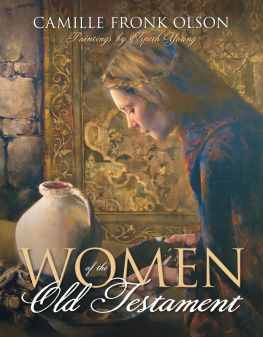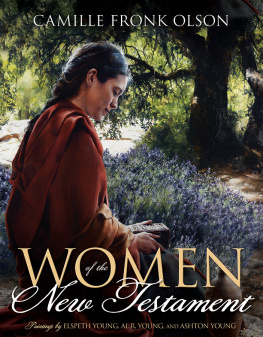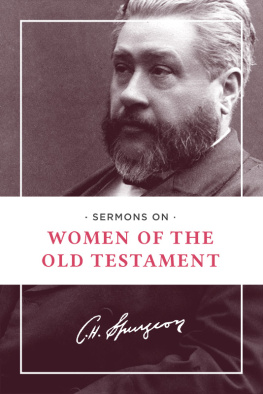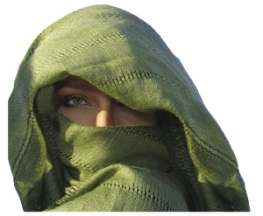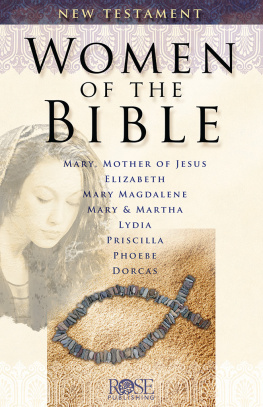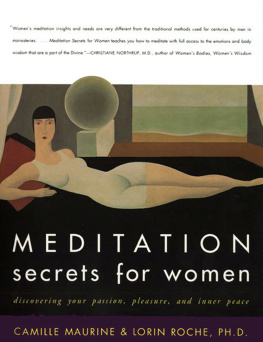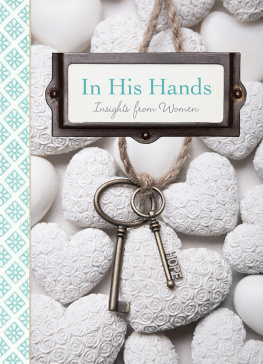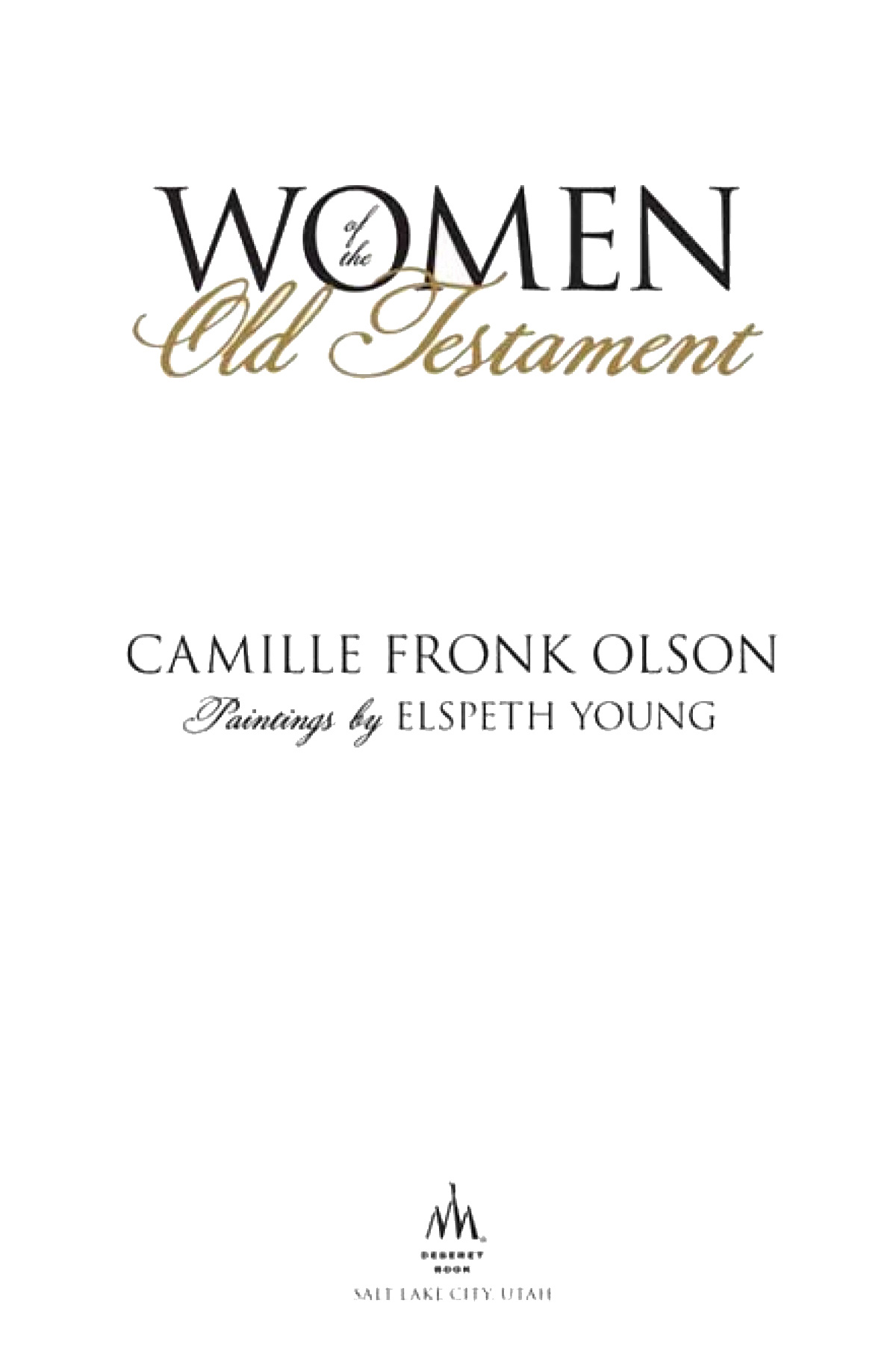2009 Text Camille Fronk Olson; Paintings Elspeth Young and Al Young.
All rights reserved. No part of this book may be reproduced in any form or by any means without permission in writing from the publisher, Deseret Book Company (permissions@deseretbook.com), P.O. Box 30178, Salt Lake City Utah 84130. This work is not an official publication of The Church of Jesus Christ of Latter-day Saints. The views expressed herein are the responsibility of the author and do not necessarily represent the position of the Church or of Deseret Book. Deseret Book is a registered trademark of Deseret Book Company.
Photos courtesy Camille or Paul Olson unless noted otherwise beside individual photos; Maps by Bryan Beach
Visit us at DeseretBook.com
Library of Congress Cataloging-in-Publication Data
Olson, Camille Fronk.
Women of the Old Testament/Camille Fronk Olson; paintings by Elspeth Young.
p. cm.
Includes bibliographical references and index.
ISBN 978-1-59038-791-7 (hardbound: alk. paper)
1. Bible. O.T.Biography. 2. Women in the BibleBiography. I. Title.
BS575.O48 2009
220.83054dc22
2009014038
Printed in the United States of America
Worzalla Publishing Co., Stevens Point, WI
10 9 8 7 6 5 4 3 2 1
To my granddaughter, Kate,
and a new generation of women
who will know and love
the scriptures
ACKNOWLEDGMENTS
Many individuals have contributed in a variety of ways to this volume. I gratefully acknowledge the review of the manuscript and academic suggestions by Donald W. Parry, professor of Hebrew and Semitic languages at Brigham Young University, and Rachel Cope, a recent Ph.D. recipient from Syracuse University in history and women's studies.
I also acknowledge the insights and meaningful questions posed by enthusiastic students in the multiple classes I have taught on the subject of women in scripture since the fall of 1991, particularly the students in a BYU class in the fall of 2005. This small group of bright women and men was selected to participate in research and exploratory questions that aided me in the initial approach to the book. Although the design and content of the project has changed dramatically and has expanded in scope since that time, I owe deep gratitude to the following students for their patience during the most serious transition period and for their insightful inquiries into the lives of many women in scripture. My thanks to Amy Bennion, Camille Buma, Susan Centeno, Karlin Coombs, Alicia Farrar, Kate Finlinson, Tyler Gibb, Natalie Hansen, Jaime Hauglid, Andrea Jolley, Jessica Kendrick, Michelle Larsen, Camille Madsen, BG McGill, Maren Payne, Letty Preston, Kathryn Ricks, Mary Robertson, Crystal Roper, Amy Soto, Ryan Stewart, Heather Thomas, Natalie Valentine, Meredith Veatch, Susan Walker, Elizabeth Watt, Elisabeth Westwood, Allyson White, Daile Wilson, Becki Wright, and Ariel Wootan. I add to these students the names of BYU students who worked for me on the project: Natalie Hansen, BG McGill, Mindy Nabrotzky, and Claire von Nieda as research assistants; Emil Pohlig in map design; and Steve Shorten in graphic design.
In fulfilling my desire for the book to be visually supportive of the scriptural text, I elected to focus on local talent and contributions. Photographs were taken and contributed by BYU colleagues David Whitchurch and Jeffrey Chadwick; a friend in Palestine, Sahar Qumseyeh; fellow travelers Ruth Ann Hubbard and Susan Y. Porter; our son David P. Olson; and a local dermatologist and friend, Dr. Steven Eyre. A BYU colleague, Richard N. Holzapfel, provided the line drawings for Israel's Tabernacle and Solomon's temple, which had been created by Michael Lyon. Fellow faculty member D. Kelly Ogden suggested improvements for the maps.
I will forever be grateful for my friendship with the talented and gracious Elspeth Young, who agreed to collaborate with me on this project from the beginning; for her brother, Ashton, who created the exquisite line drawings for the book; and for her father, Al R. Young, who produced the painting of Eve. A dear friend, Kathy Jensen, has been a source of encouragement. She has a pulse on what will communicate to the intended audience and suggested ways to present the material graphically. Perhaps most important to my ability to stay focused and complete this work is my husband, Paul F. Olson. His constant encouragement, proofreading, and enthusiasm for my work compels me to improve in my research and writing and to better understand what it means to be a disciple of Jesus Christ. Additionally, Paul was an amenable photographer of many of the scenes included in the book, which we saw during our 2008 visit to the Holy Land.
Individuals at Deseret Book gave suggestions beginning with the earliest drafts of the first chapters and continuing until the manuscript was a stunning finished product. I am grateful to Jana Erickson for her trust in me and her wise advice that expanded the initial vision I had for the book and to Suzanne Brady for her excellent editorial skills and excitement for the book. I also acknowledge the contributions of art director Shauna Gibby and typographer Rachael Ward.
INTRODUCTION
Nearly twenty years ago, the magic of studying scripture through the lives of the women therein was opened to me through the compassion and genius of Margot Butler. Margot developed a course on women in the scriptures while teaching at the LDS Business College at the same time that I was employed there as an administrator. Whenever I passed by her office, I stopped to hear a brief insight or to be introduced to another story I had missed in the Old Testament.
Because the tendency is nearly universal to focus more on the prophets and political leaders in our formal scripture discussions, women's roles and contributions are often marginalized and even ignored. I was both amazed and thrilled to learn that more than 170 women are named in all the standard works, and hundreds more unnamed women are mentioned. Because only three women are named in the Book of Mormon and two women in the Doctrine and Covenants, it is clear that the great majority of scriptural women are found in the Bible.
When I left administration and returned to teaching, this time at the institute of religion near the University of Utah, I received permission to introduce a course on women in the scriptures. During regular meetings, Margot and I developed a packet for the course and a listing of all the women in scripture. In a way, this book represents a promise I made to Margot years ago that I would write something that invited others, men as well as women, to discover the scriptures through the lens of women's experiences and testimony.
No two are alike among this large number of women in scripture. Women in the Bible are young, old, and middle-aged. Some are affluent, others live in poverty, but most live in economic conditions somewhere in between. Most of the women in scripture are married, but some are single. Some are born in the lineage of the prophets, and others come from the cultures of the world. Some make their contributions from within a loving and supportive marriage; others bring about much good while being married to an abusive, absent, or unfaithful husband. Some have children; others do not. All of them have challenges. Rescuing others without thought of their own danger or sacrificing their lives to give life to another, many of these women are also types of Christ. They were encouraged and enabled to do what God asked them to do. When we consider the scriptural message through the experiences of women, we find that many women should be added to our list of outstanding men as examples of people who inspire us to greater discipleship.

